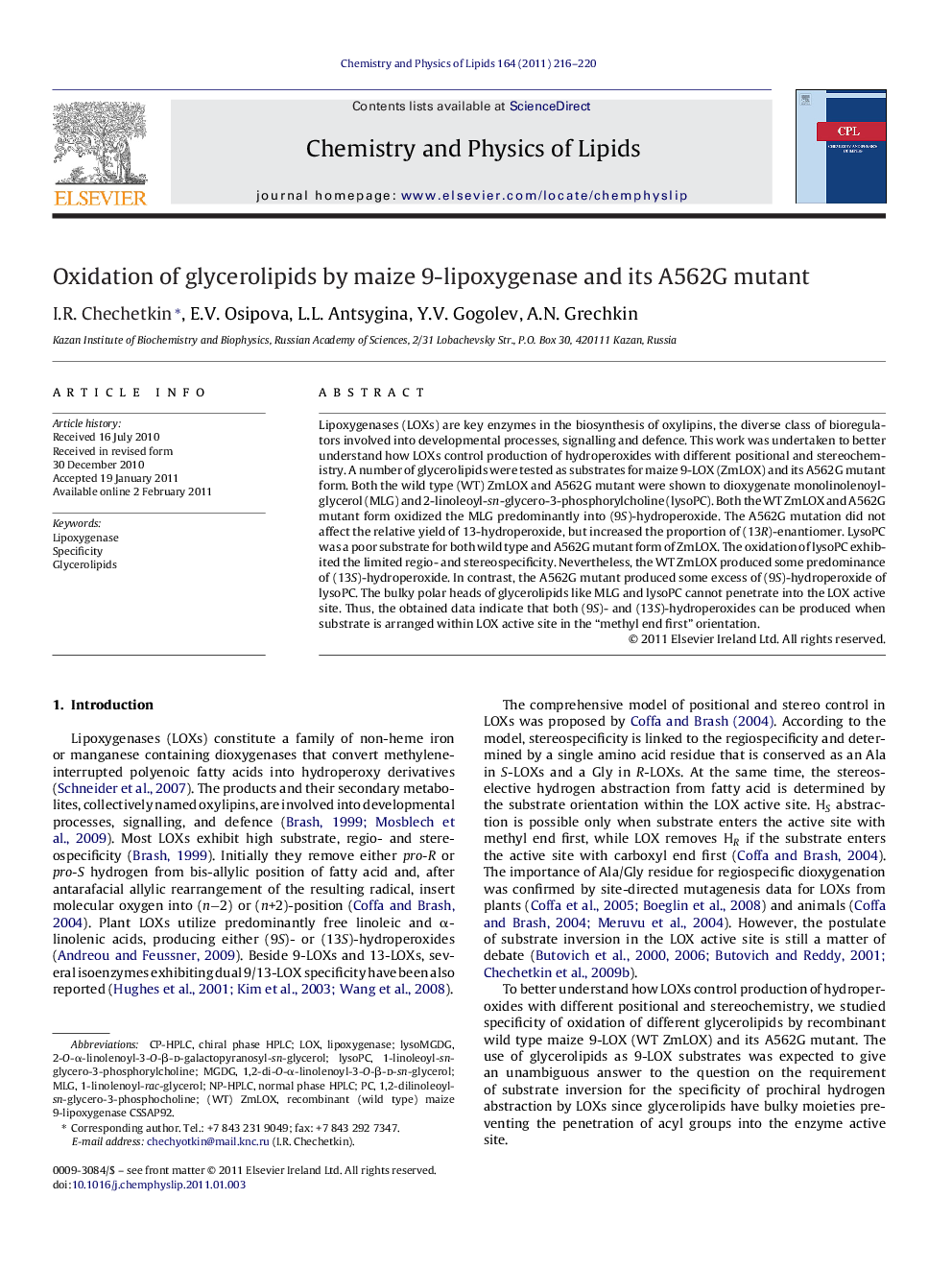| Article ID | Journal | Published Year | Pages | File Type |
|---|---|---|---|---|
| 1253406 | Chemistry and Physics of Lipids | 2011 | 5 Pages |
Lipoxygenases (LOXs) are key enzymes in the biosynthesis of oxylipins, the diverse class of bioregulators involved into developmental processes, signalling and defence. This work was undertaken to better understand how LOXs control production of hydroperoxides with different positional and stereochemistry. A number of glycerolipids were tested as substrates for maize 9-LOX (ZmLOX) and its A562G mutant form. Both the wild type (WT) ZmLOX and A562G mutant were shown to dioxygenate monolinolenoylglycerol (MLG) and 2-linoleoyl-sn-glycero-3-phosphorylcholine (lysoPC). Both the WT ZmLOX and A562G mutant form oxidized the MLG predominantly into (9S)-hydroperoxide. The A562G mutation did not affect the relative yield of 13-hydroperoxide, but increased the proportion of (13R)-enantiomer. LysoPC was a poor substrate for both wild type and A562G mutant form of ZmLOX. The oxidation of lysoPC exhibited the limited regio- and stereospecificity. Nevertheless, the WT ZmLOX produced some predominance of (13S)-hydroperoxide. In contrast, the A562G mutant produced some excess of (9S)-hydroperoxide of lysoPC. The bulky polar heads of glycerolipids like MLG and lysoPC cannot penetrate into the LOX active site. Thus, the obtained data indicate that both (9S)- and (13S)-hydroperoxides can be produced when substrate is arranged within LOX active site in the “methyl end first” orientation.
